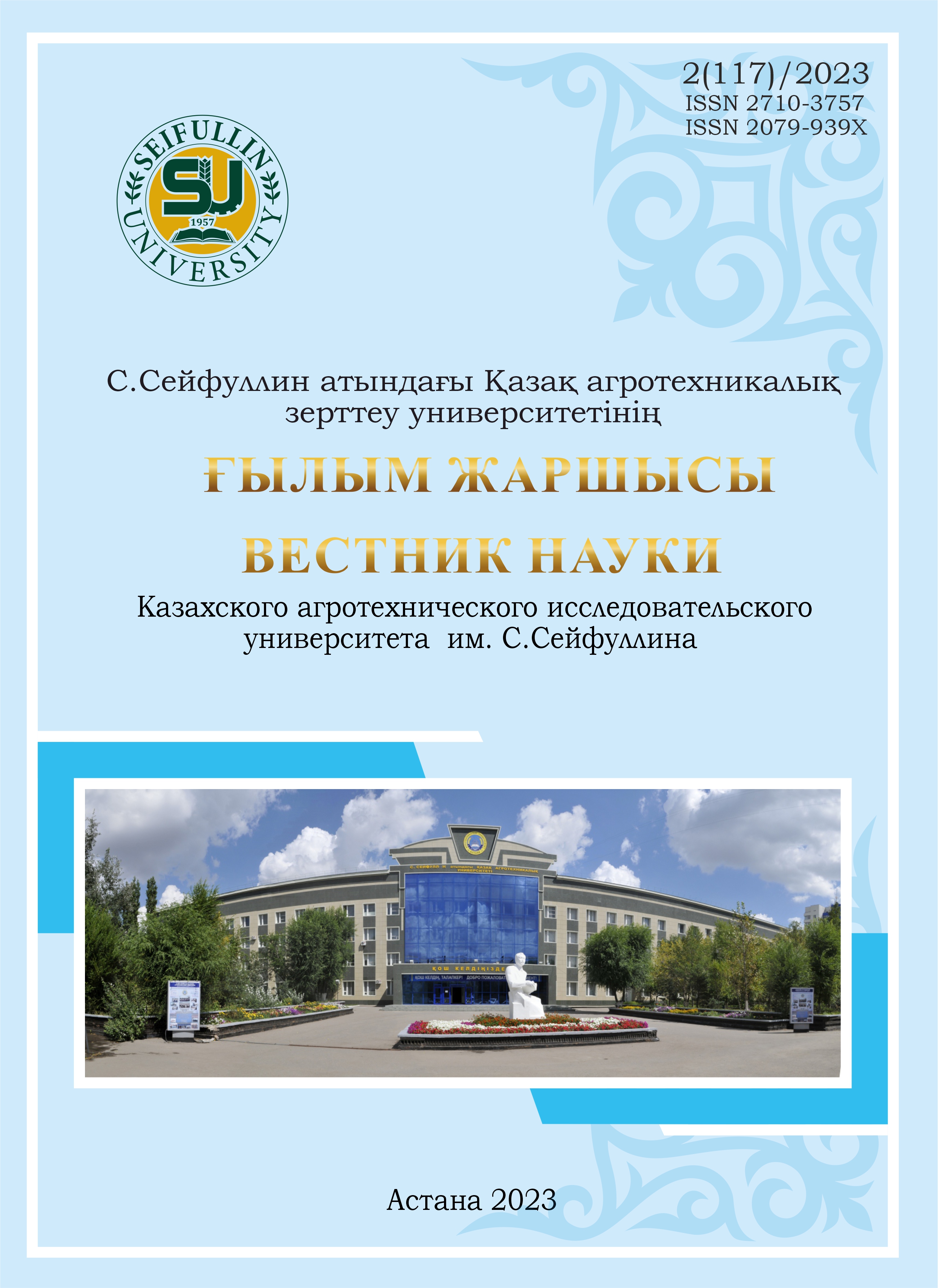PEA GRAIN QUALITY DEPENDING ON CULTIVATION TECHNOLOGIES AND FERTILIZER DOSE
DOI:
https://doi.org/10.51452/kazatu.2023.2(117).1398Keywords:
peas; traditional technology; zero technology; grain quality; protein content; filminess; general culinary assessment.Abstract
In Northern Kazakhstan, Akmola region, in LLP "Scientific and Production Center of Grain Farming named after. A.I. Baraeva” conducted research to study the impact of various technologies - traditional, zero, on the productivity and quality of peas, using elements of mineral fertilizers. When assessing the grain quality of pea varieties, the content of protein, starch, nature, weight of 1000 grains was determined according to interstate standards and generally accepted methods. The maximum pro-tein content was noted when using zero technology on variants with the introduction of N30 in autumn superficially + P20 in rows with the Kasib variety - 23.26% and the Oris variety - 24.38%. The greatest accumulation of starch was observed when using traditional technology on the P20 variant in rows in the Kasib-64.91% variety, the Oris-60.25% variety. The traditional technology and the variety Kasib were charac terized by the advantage in terms of natural weight of grain on variants N30 in au-tumn superficially + P20 in rows (227.6 g), P80 under peas (220.7 g). The organolep-tic evaluation of taste, presented in points, showed a slight difference between tradi-tional and zero technologies in favor of the latter (4.8). A similar trend was observed when determining the color of boiled pea seeds of the Oris variety (traditional 4.5 points, zero - 4.8 points). In the process of correlation analysis, relationships between quality indicators were established. The color of boiled seeds had a great influence on the overall culinary assessment (r = 0.83). Pea cooking time is related to the protein content in the grain (r=-0.62). The value of this study is to determine the quality indi-cators of pea grain, their relationships, organoleptic taste assessment, general culinary assessment depending on cultivation technologies. The practical significance lies in the possibility of using various technologies in the cultivation of high-quality pea grain.

